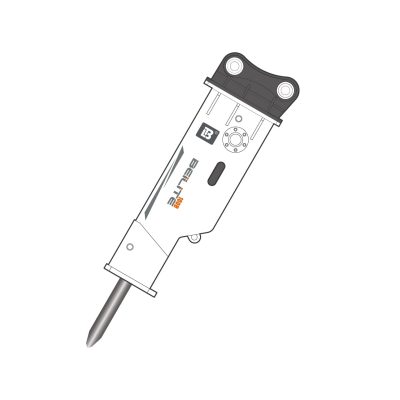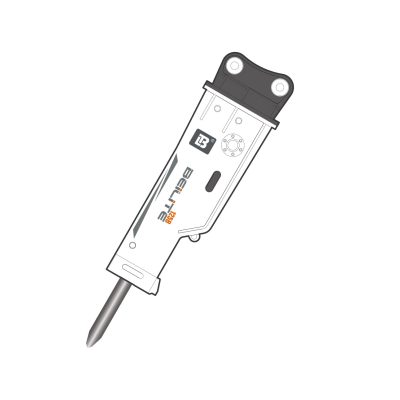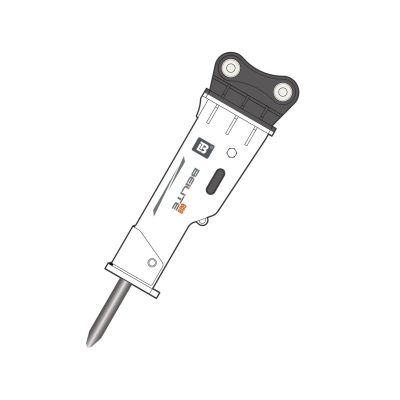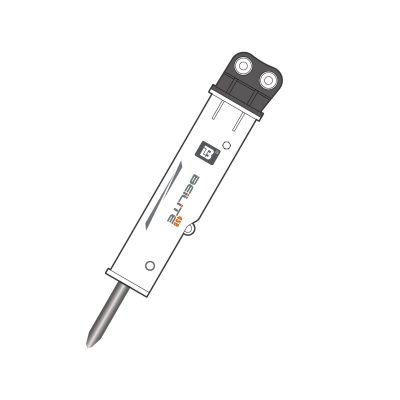What Is a Breaker on an Excavator?
A breaker on an excavator refers to a hydraulic breaker mounted as an excavator attachment. Engineers connect this tool to hydraulic machines to deliver powerful, focused impacts. It suits tasks that require breaking rock, concrete, or frozen ground. Manufacturers design breakers in various models, each compatible with specific excavator flow and pressure ratings.
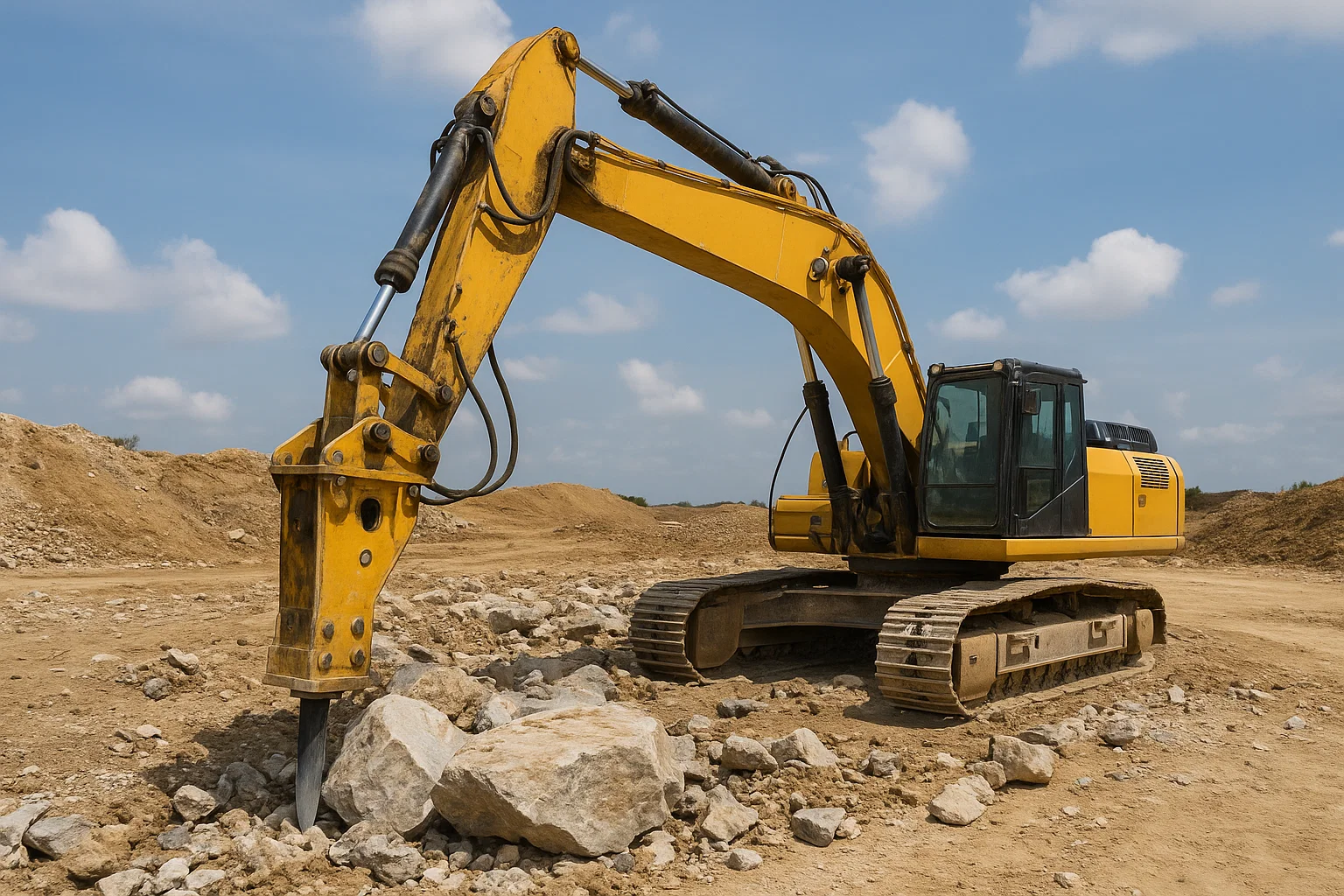
🟩 👉 Need the right breaker for your machine? Contact Beilite experts today to get personalized guidance.
Why Use a Hydraulic Breaker on Your Excavator?
Contractors value a hydraulic breaker for several reasons:
- Hydraulic breaker delivers stronger impact energy than handheld tools.
- Contractors use it to improve efficiency and reduce labor time.
- Excavator-mounted breakers offer precise control.
- Operators avoid the hazards and noise of explosives or manual demolition.
- Machinery owners enjoy lower operational cost as compared to repeated drilling or hammering.
In summary, a breaker on an excavator increases productivity, saves time, and improves safety.
🟩 👉 Discover how Beilite breakers can transform your workflow. Request a quote now.
Is Your Excavator Compatible with a Breaker?
Builders must ensure breaker compatibility with excavators. Factors include:
- Carrier’s hydraulic flow (L/min) and pressure (bar)
- Carrier’s operating weight and size
- Mounting interface (pin diameter and bracket spec)
- Oil return capacity and cooling support
Consult Beilite experts before ordering. We evaluate your machine data and recommend models that fit.
🟩 👉 Unsure about compatibility? Beilite provides full technical consultation. Chat with us.
How to Install a Breaker on an Excavator
We outline excavator breaker installation process step by step:
- Park machine on flat surface and shut down engine.
- Release hydraulic pressure from lines.
- Disconnect hoses and install mounting bracket on boom.
- Attach breaker using pins and secure bolts.
- Connect hydraulic hoses with correct flow direction (A/B).
- Start engine, cycle auxiliary hydraulics, and check for leaks.
- Gradually increase pressure to test striker timing.
- Secure hoses, test under light load, then full working range.
Following this how to install a breaker on an excavator protocol ensures safe, reliable setup. Only certified technicians should perform installation.
🟩 👉 Let Beilite handle your installation concerns. Ask our team for step-by-step support.
Different Types of Excavator Breakers
Operators choose from types of breakers for excavators based on application:
- Light breakers: Fit mini excavators, ideal for trenching, curb removal.
- Medium breakers: Suit 10–20 t machines and demolition jobs.
- Heavy breakers: Match 30 t+ carriers for mining and quarry work.
Each type offers unique impact energy (Joules) and blow frequency (BPM). Matching breaker size to carrier and task ensures efficient performance.
🟩 👉 Choosing between models? Get matched with the best breaker for your task — inquire now.
Top Applications for Excavator Breakers
Contractors deploy a hydraulic breaker across many sites:
- Urban demolition: Remove concrete walls, footings, and foundations with precision.
- Road maintenance: Break asphalt surfaces before repaving.
- Utility trenching: Excavate under sidewalks or hard soils.
- Mining & quarrying: Split large rocks or ore.
- Bridge and airport runway removal: Dismantle large slabs systematically.
- Underwater demolition: Use sealed breakers for submerged work.
These uses prove versatility of excavator breaker on sites worldwide.
How to Choose the Right Breaker for Your Excavator
Selecting the best hydraulic breaker for excavator involves:
- Verifying carrier’s hydraulic specs and weight range
- Reviewing job type and required striking power
- Comparing Beilite breakers by energy, frequency, and durability
- Considering spare parts availability and warranty support
Beilite offers models that perform reliably, come with global support, and match major excavator brands.
🟩 👉 Not sure what fits best? Beilite’s specialists are ready to help — schedule a consultation today.
Safety Tips When Using a Breaker on an Excavator
Contractors rely on excavator breaker safety tips for secure operations:
- Operators always wear PPE and cabin protection
- Workers never allow unauthorized personnel near active breaker
- Technicians avoid dry firing to prevent tool damage
- Supervisors maintain vertical orientation during strikes
- Inspect hydraulic connections and tool rods daily
- Service accumulator nitrogen and bolts per schedule
Following these rules reduces risk and extends breaker life.
How Beilite Helps You Equip the Right Breaker
We present Beilite brand as your trusted provider:
- Engineers design each hydraulic breaker to match excavator specifications
- Technicians perform compatibility audits, installation guidance, and follow-up training
- Supply chain ensures spare parts and cartridges across global service network
- Clients access technical assistance 24/7
We guarantee fast delivery, reliable quality, and on-site support tailored to project demands.
🟩 👉 Join hundreds of global clients who trust Beilite. Explore our range or request a custom quote.
Get Expert Advice and Pricing Support
We invite you to engage:
- Compare models, ask for performance data, or request pricing
- Book a technical call or site evaluation
- Place an order directly online or through reseller
🟩 👉 Looking for pricing or expert recommendations? Click here to contact Beilite now — fast response guaranteed.
Frequently Asked Questions
Q1: Can I install a breaker on any excavator?
Yes, but you must match the breaker’s flow and mount to the carrier. Beilite checks machine specs to ensure correct pairing.
Q2: How long does a breaker last on an excavator?
A well-maintained breaker endures thousands of hours. Regular oil change, accumulator check, and tool rod replacement ensure long life.
Q3: How much maintenance does a hydraulic breaker need?
Technicians inspect all components weekly under heavy use. Full service every 250–500 hours helps sustain performance.
Q4: What size breaker is best for my excavator?
Match carrier tonnage, hydraulic flow, and job type. Mini machines use lightweight models; mining carriers require heavy-duty units.


